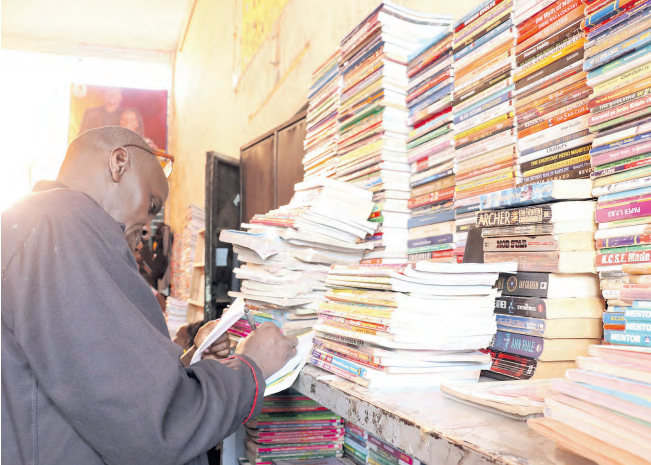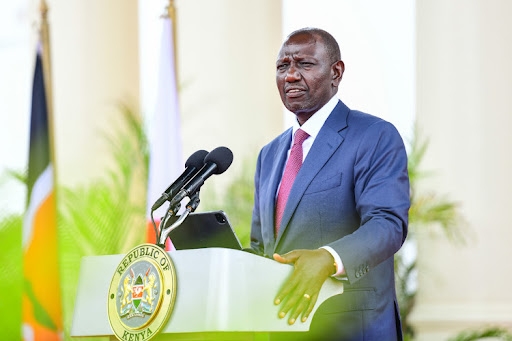

William Momanyi, a resident of
Umoja Estate in Nairobi will not
be sending back his children to
the school they have attended for
the past five years.
Instead, he has opted to transfer them to a different school within the estate which he considers cheaper, as he navigates cutting down spending on fees which he terms his biggest headache this year.
According to Momanyi, he has been paying an average Sh30,000 per child per term which puts the total at Sh90,000 for his three children.
The new school has given him a fee structure of Sh22,000 per term, which saves him about Sh24,000 in total. “I struggled to pay fees last year and I don’t want that to repeat itself this year so I have opted to move them,” the wines and spirits operator told the Star.
For Irene, a vegetable vendor in Donholm, she is not sure if her children will report to school this week as she has not raised enough money.
“There is nothing to be happy about the New Year. Last year’s struggles have followed me into 2025 and I am just praying and hoping something better opens up,” she said as she served a customer.
These are predicaments of many parents across the country as the 2025 school calendar begun yesterday, with thousands of pupils and students reporting back to school this week.
Some parents have had no option but to delay taking their children to school, with some having to plead with schools to accept their children with a promise to pay later, amid a paradox of low inflation and empty pockets that is being experienced in households.
According to the Kenya National Bureau of Statistics (KNBS), yearon-year consumer price inflation for December inched up to three per cent from 2.8 per cent a month earlier, on higher food, energy and transport.
Kenyan households are however still struggling to meet basic needs despite inflation remaining at a 14- year low, amid a depressed spending power.
Education is the main highlight this month as many parents struggle to make ends meet, with school costs taking up a huge chunk of households’ earnings.
A recent study by WorldRemit indicates that education cost for most households in Kenya is at 1,054.31 percent, or approximately 10 times their average monthly household income.
The research which was conducted globally to establish how the cost of school supplies impacts families around the world revealed that the total cost per child is at an average Sh68,701.
In Kenya, the total cost per household is estimated at Sh221,904 given the average household size of 3.23.
“This is higher than average incomes for most households in the country,” WorldRemit noted in its report.
The average monthly income in Kenya is around Sh20,123, but there is significant income inequality in the country.
The richest 10 per cent of Kenyans earn 23 times more than the poorest 10 per cent, and 40 per cent of workers earn less than Sh50,000 per month.
The average monthly salary in Kenya is at between Sh30,000 and Sh130,000. Most schools, mainly private, are charging between Sh20,000 and Sh40,000 per term as fees alone, in addition to other costs such as transport, meals, clubs and other activities.
For Felita Nakah, health and education have taken a toll on her. “ This is something the government must look into and ease the burden,” Nakah said.
RAIDED PAYSLIPS
The employed are navigating squeezed earnings after the government raided their payslips for statutory deductions to fund the recently rolled-out Social Health Insurance Fund and affordable housing, reducing their take-home.
While it has been effected on payrolls, each Kenyan is expected to pay 2.75 per cent of their gross income, the highest levy on salaries since independence, to the healthcare programme.
Kenyans in the informal sector are expected to pay 2.75 per cent of their earnings, to be determined by a means testing tool that is still non-operational.
Housing levy is taking 1.5 per cent of an employee’s monthly gross salary with employers required to match the same, to make it three per cent.
This is in addition to PAYE, and NSSF deductions with up to 30 per cent of salaries now going to taxes.
With planned increase in NSSF deductions, set to be six per cent of gross earnings, it is estimated that up to 40 per cent of an individual’s salary will go into taxes, further reducing take-home salaries hence cutting the spending power.
“Low inflation amidst high interest rates, declining private sector credit growth and anaemic private sector activity is an indication of deteriorating economic growth. It is important to note that inflation is still a growth in prices, therefore the high cost of living persists,” data analyst, Mihr Thakar, told the Star.
BORROWING TO PAY BILLS
Meanwhile, Kenyans have turned to borrowing to meet some basic needs with a huge number depending on digital lending platforms for quick turnround.
According to industry data, the majority of loans taken by Kenyans from digital lenders is mainly going to settle school and medical expenses.
A recent report by digital credit provider-Tala indicates schooling needs remained the top reason why Kenyans borrow.
“The other top reasons that drove appetite for loans were buying stock for an existing business, medical expenses, emergency expenses, starting a side hustle or a business,” the report reads.
Kenya’s education spending per capita is relatively high compared to other countries in the region.
However, education costs are still a burden for guardians, and there are many challenges to providing quality education in Kenya, including poor-quality teaching, large class sizes, high drop-out rates, parents paying additional costs and increased cost of school materials.
The education sector faces challenges such as inadequate infrastructure, low uptake of STEM (Science, Technology, Engineering, and Mathematics) education, and disparities in equity, experts note.
Kenya’s constitution guarantees free basic education to every child, but public funding for primary education is not enough with school fees still common in public schools, and many parents struggle to afford them.
The government has allocated Sh656.6 billion to the education sector in the 2024-25 financial year’s budget, with Sh71 billion going towards the free primary and day secondary education programme.
Junior secondary school capitation has been allocated Sh30.7 billion, while Sh3 is set for the school feeding programme, Sh6 billion is for infrastructure development in primary and secondary Schools, Sh150 million goes to ICT integration in secondary schools, Sh62.8 billion for Higher Education Loans Board (HELB) and other Scholarships, Sh71.9 billion is for university education while Sh700 million is for Research, Science, Technology and Innovation.
The bulk of the budget, Sh358.2
billion, goes to the Teachers Service
Commission.














